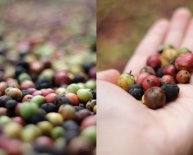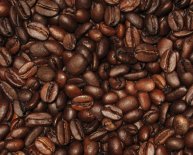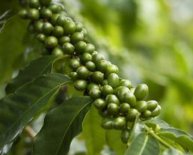
Preparing coffee beans
Green espresso beans are now actually the seeds from the fresh fruit of Coffee Trees
Fresh coffees are green when taken out of the good fresh fruit of tree. It's the roasting process that changes all of them from green beans towards the numerous shades of brown, based on your roast preference. Therefore in the industry, Green Coffee simply suggests unroasted coffee beans (that are prepared for roasting).
Click on this link to review our providing of fine green coffees.
There are two main main types of coffee woods:
- Arabica - the origin of your advanced specialty coffees
- Robusta - a heartier, much more prolific tree, with greater
caffeine (unfortunately it often has actually a rubbery, level flavor)
Though some coffee combinations do contain beans through the Robusta tree (to add caffeine, body and crema). Generally, niche level single source coffee originates from the Arabica plant.
The SCAA standard for Arabica Coffee is subdivided into 5 grades, distinguished primarily because of the number of "defects" the coffee includes per lb. Like, class 1 coffees need less after that 5 twigs, or broken or discolored beans, etc. per lb. In general, the coffees here at Burman Coffee Traders are grade 1 Arabica, the best coffees available.
But sometimes we discover an excellent coffee from a region that grades their particular coffee in a different way, in other words. which contains a greater wide range of broken beans, etc. The Yemen Mochas many Ethiopians are these types of coffees.
Processing Types Of Green Coffee
Before they can be roasted, green espresso beans must be separated from the wet, nice cherry pulp and internal hulls, then washed and dried. This series of tips is called processing or planning (prep). The key processing techniques are referred to as natural (dry), washed and semi-washed.
The technique useful for organizing beans features a dramatic effect on coffee flavor, as we’ll see here. Additionally, keeping the discreet, intense glass quality of Specialty beans calls for processing actions far beyond the simple hulling and drying needed to prepare other coffees, seeds and grains for their markets. These extra measures, directed by expert quality management, include considerable expense and price to specialty espresso beans.
Natural or Dry Processing
The original way of preparing coffees for marketplace, it will be the favored way for numerous origins, specially in which liquid are at a premium. At its most rudimentary, ripe cherries are spread on the floor in the sun. If the fruit is dried out, it is pounded and winnowed to separate your lives the beans away from the dried fruit and hulls; they’re then graded, weighed and bagged.
















